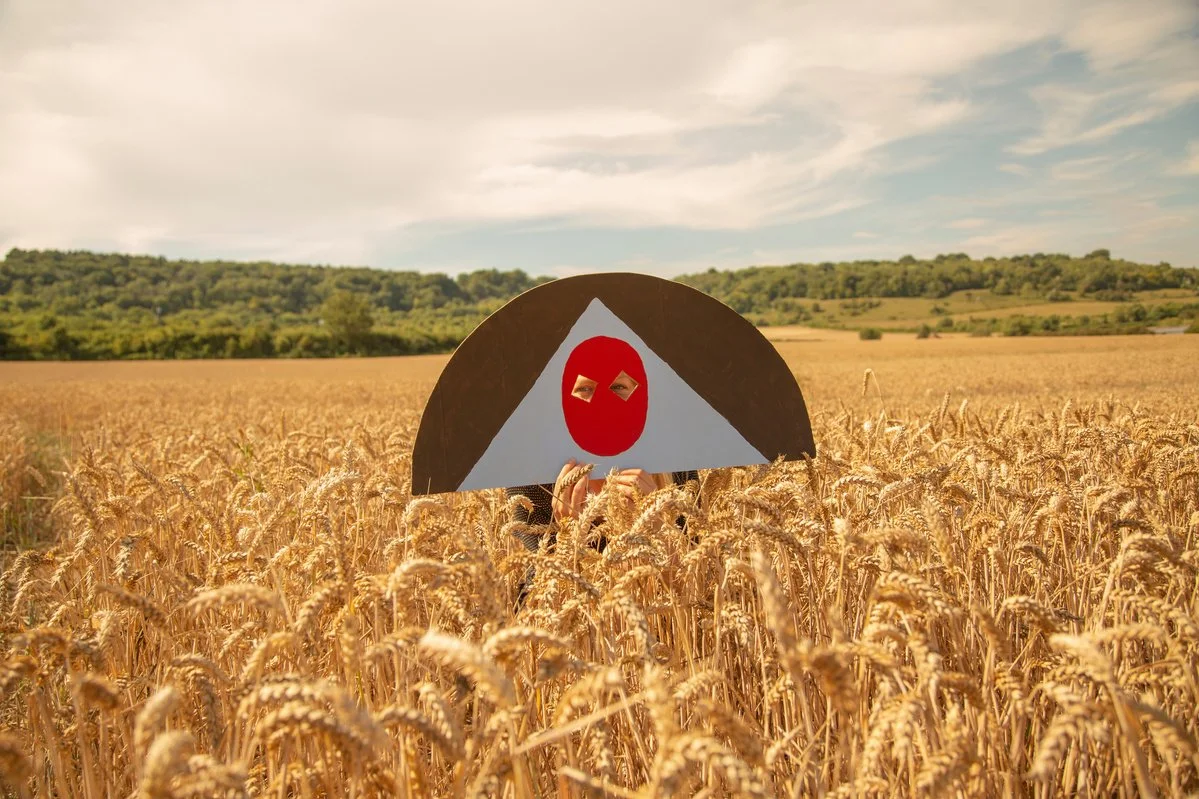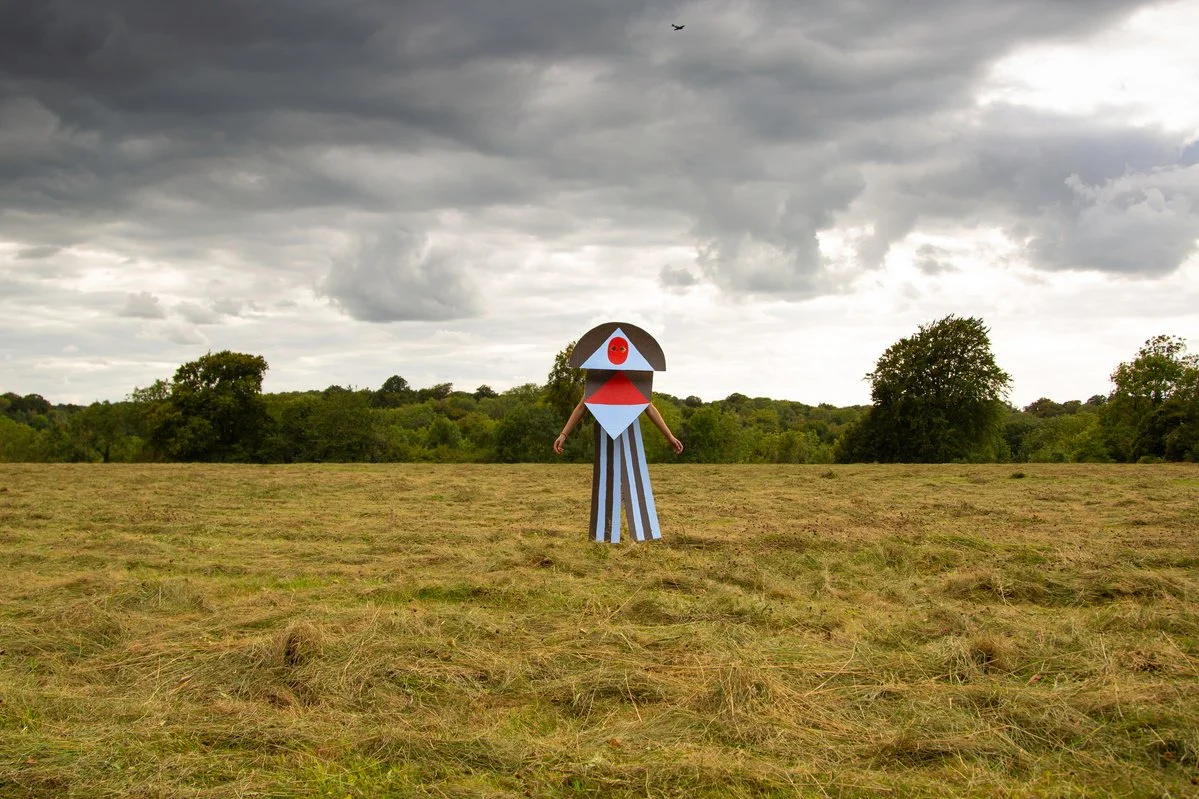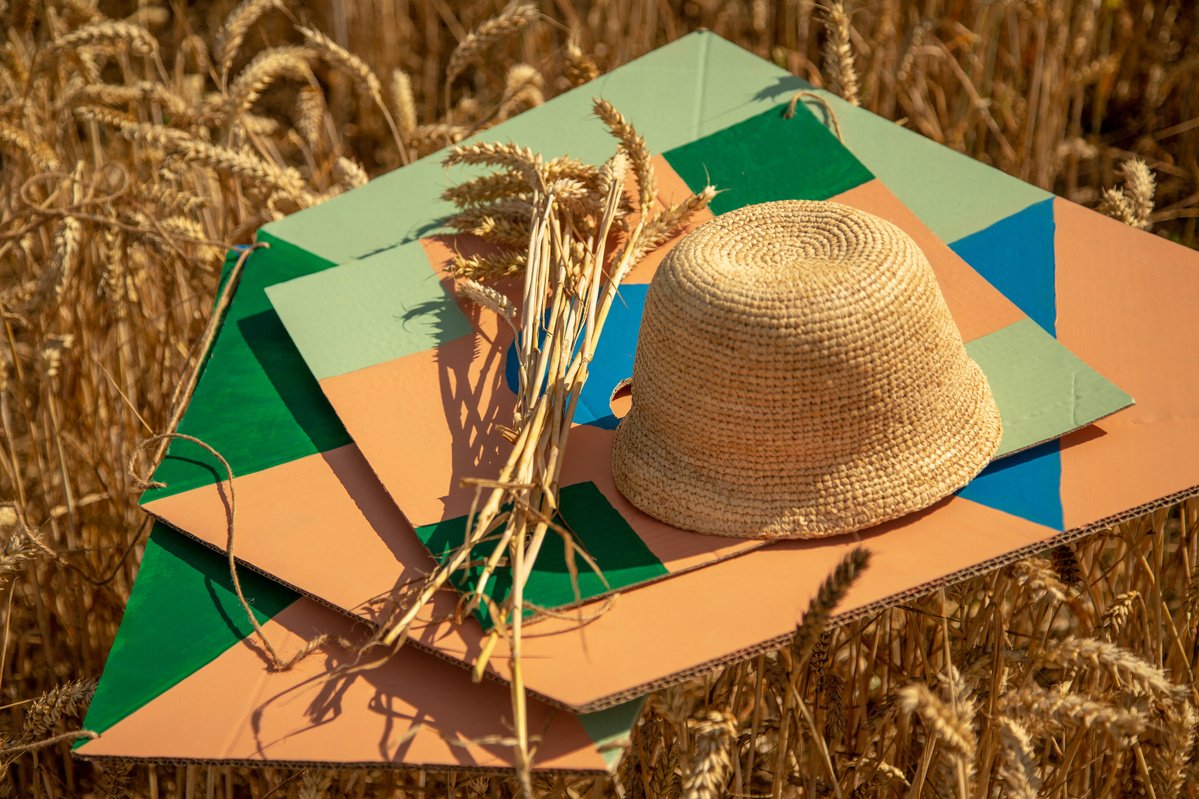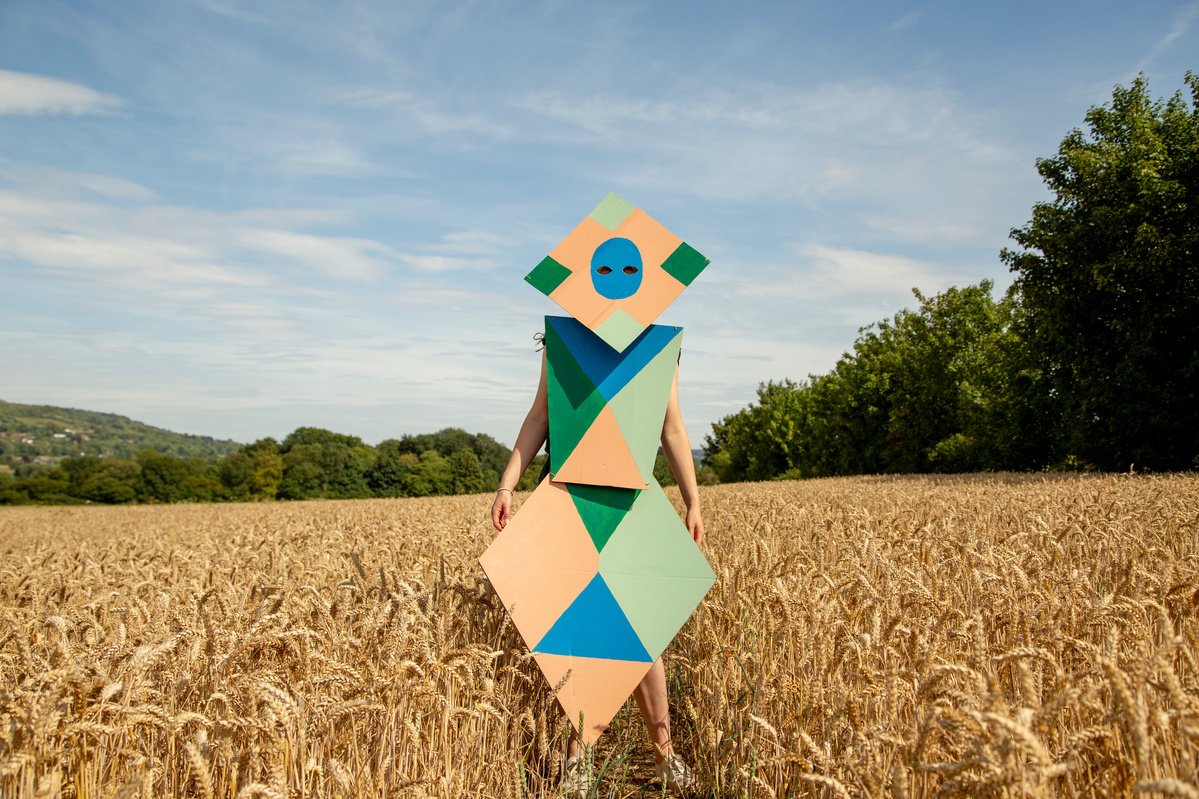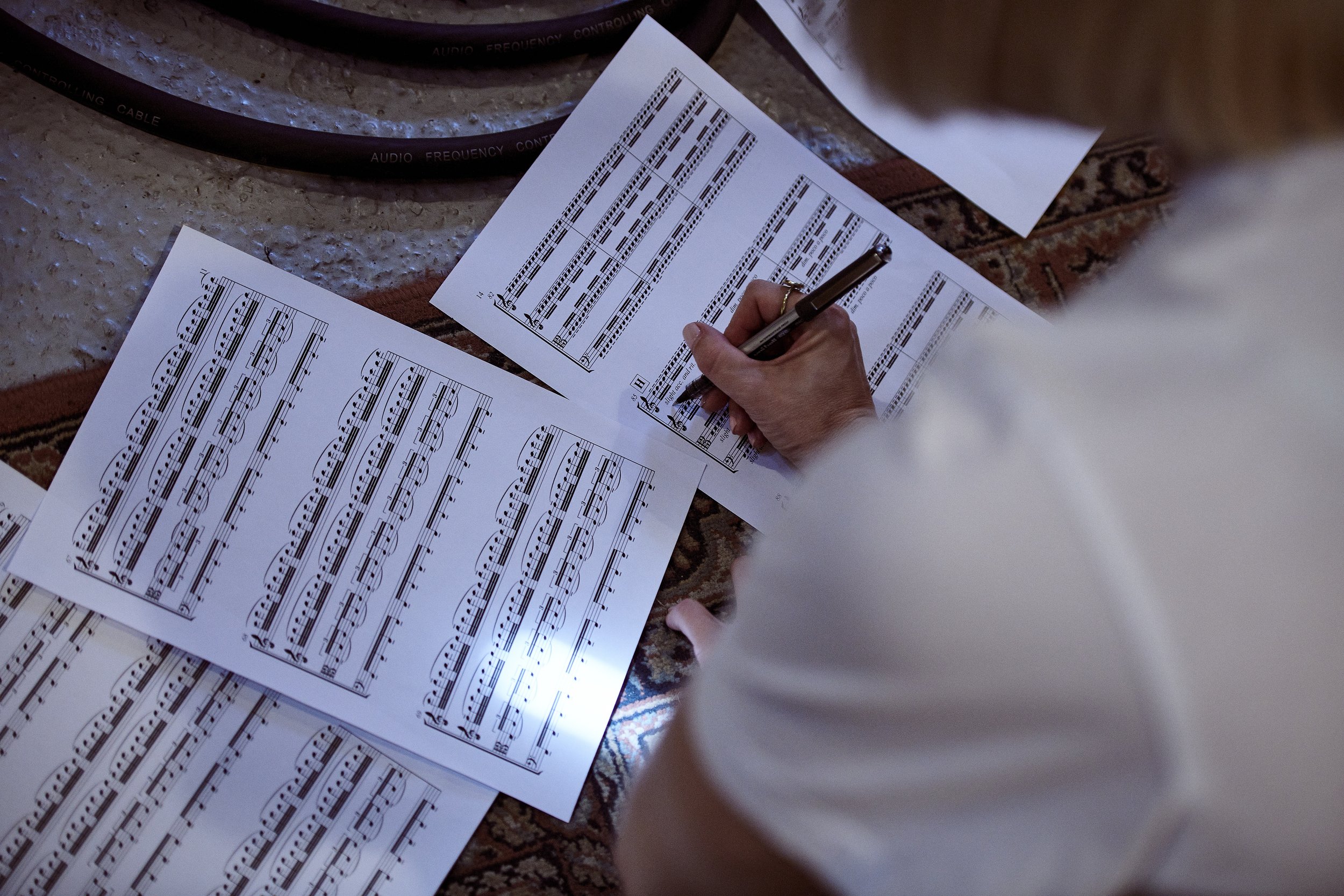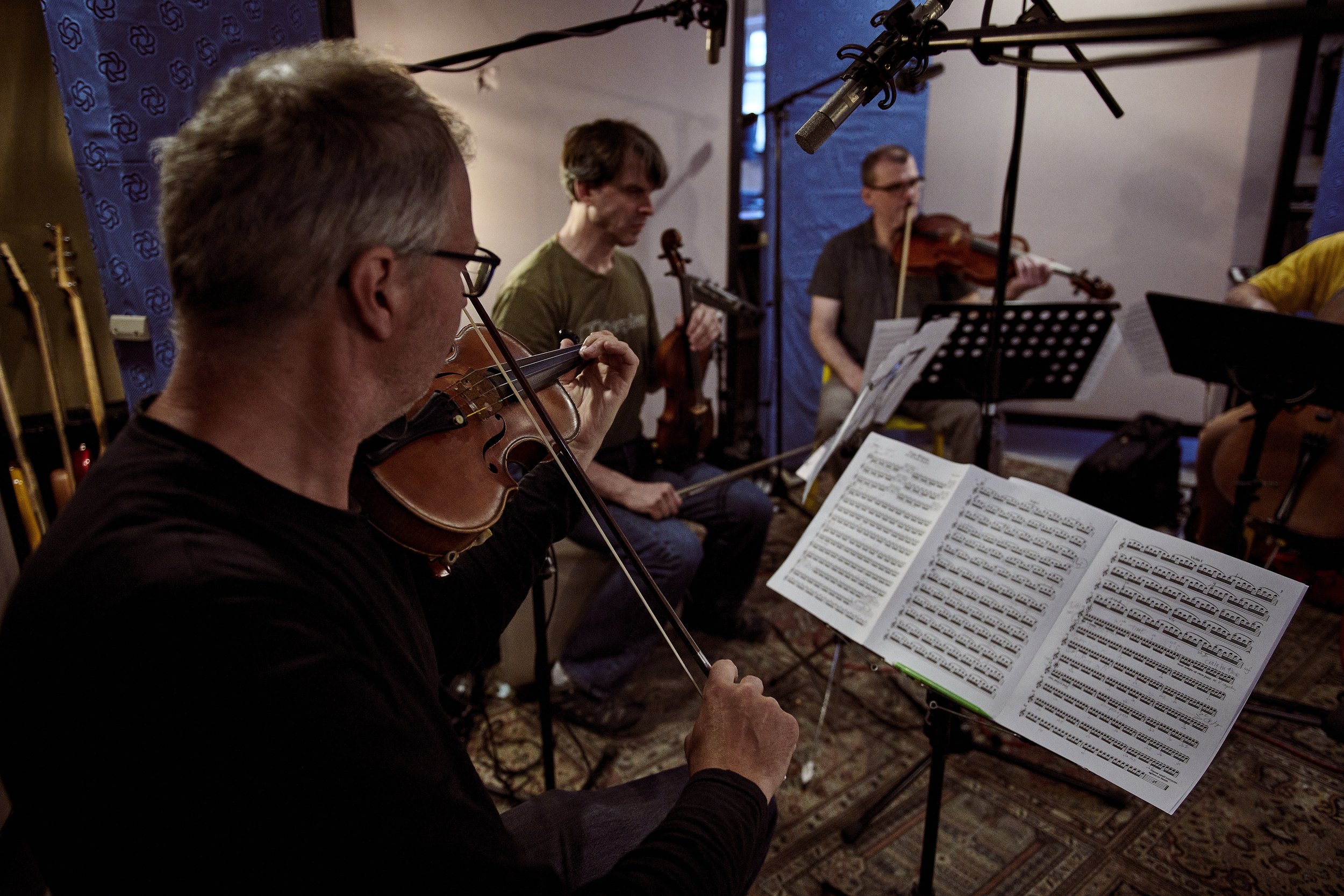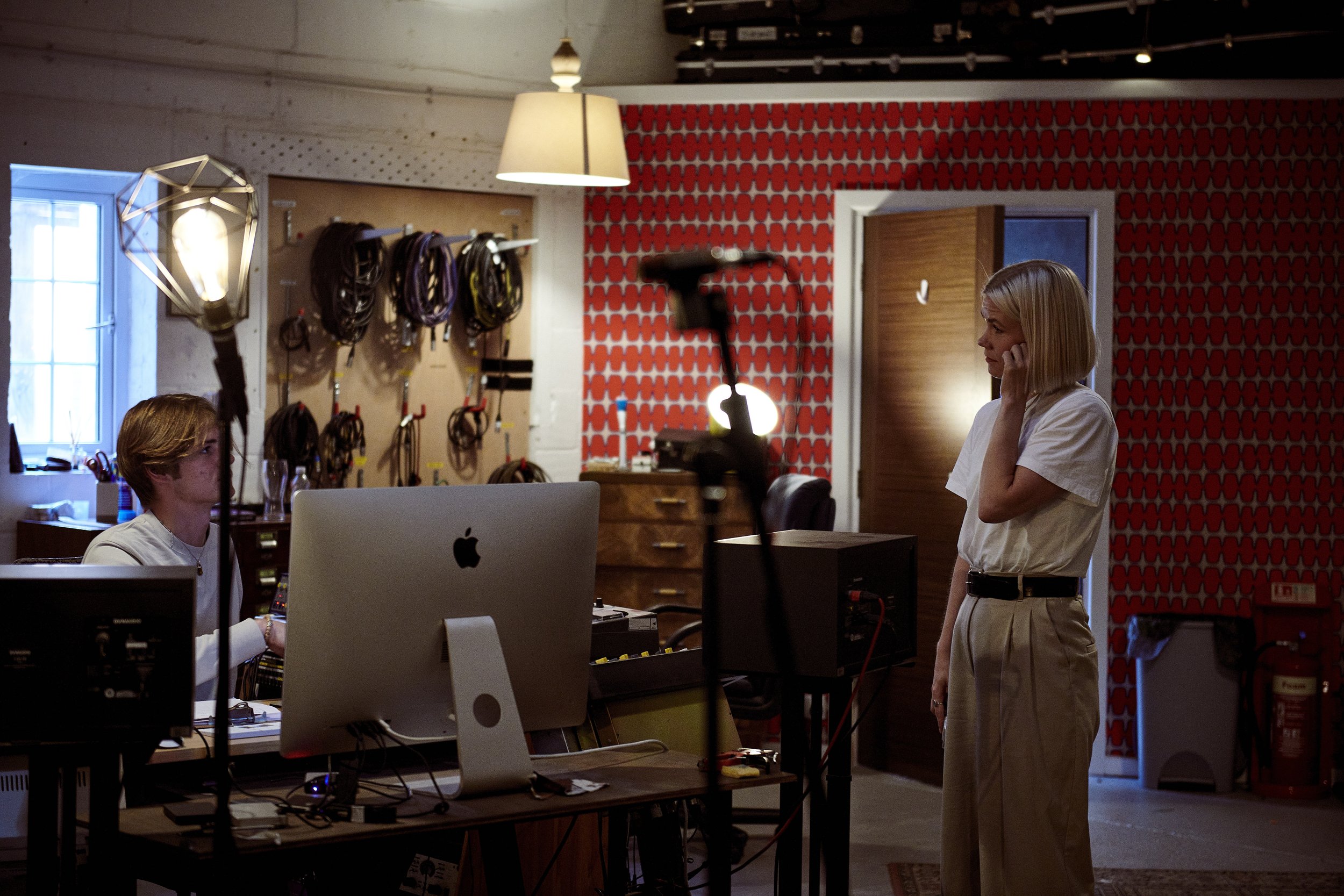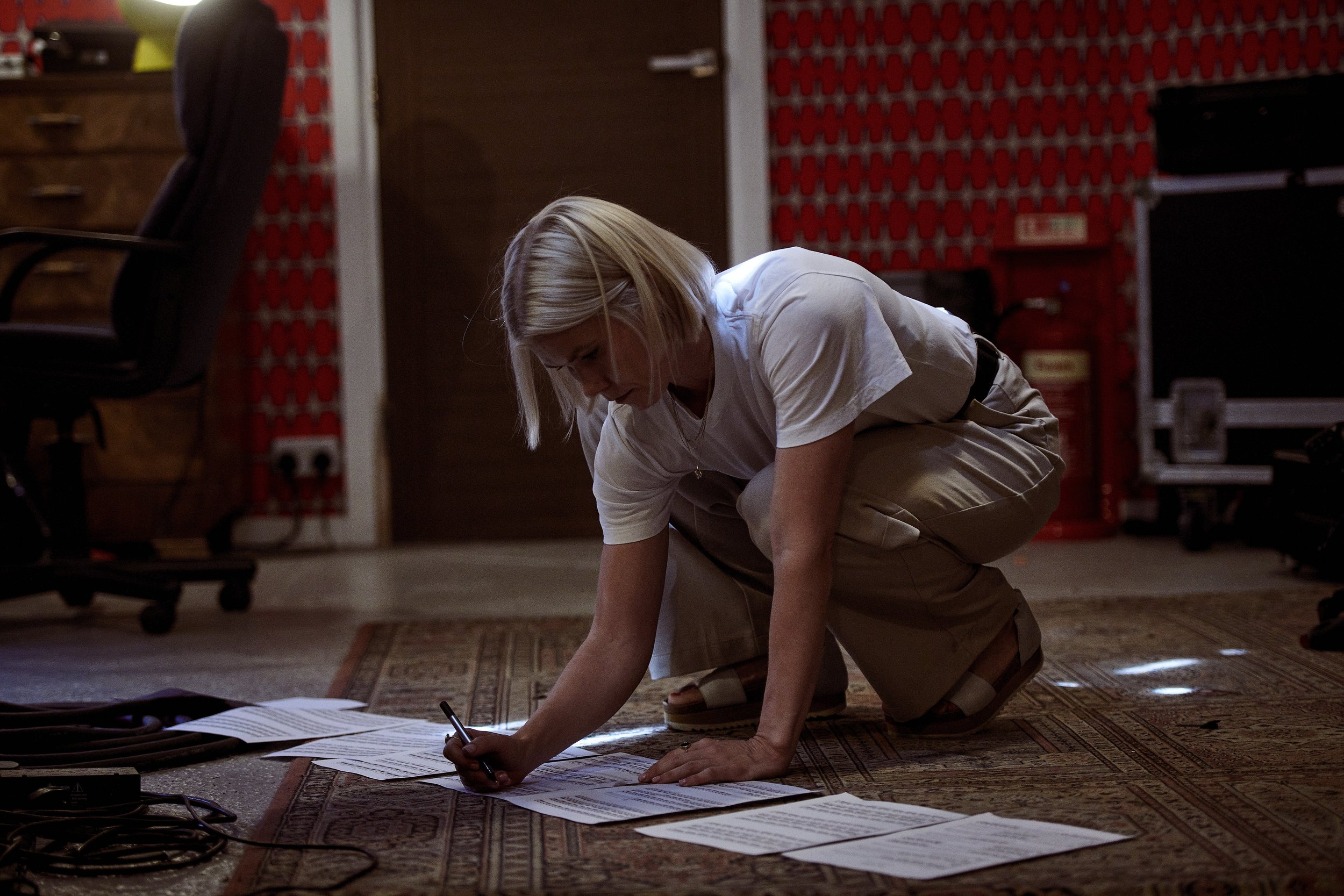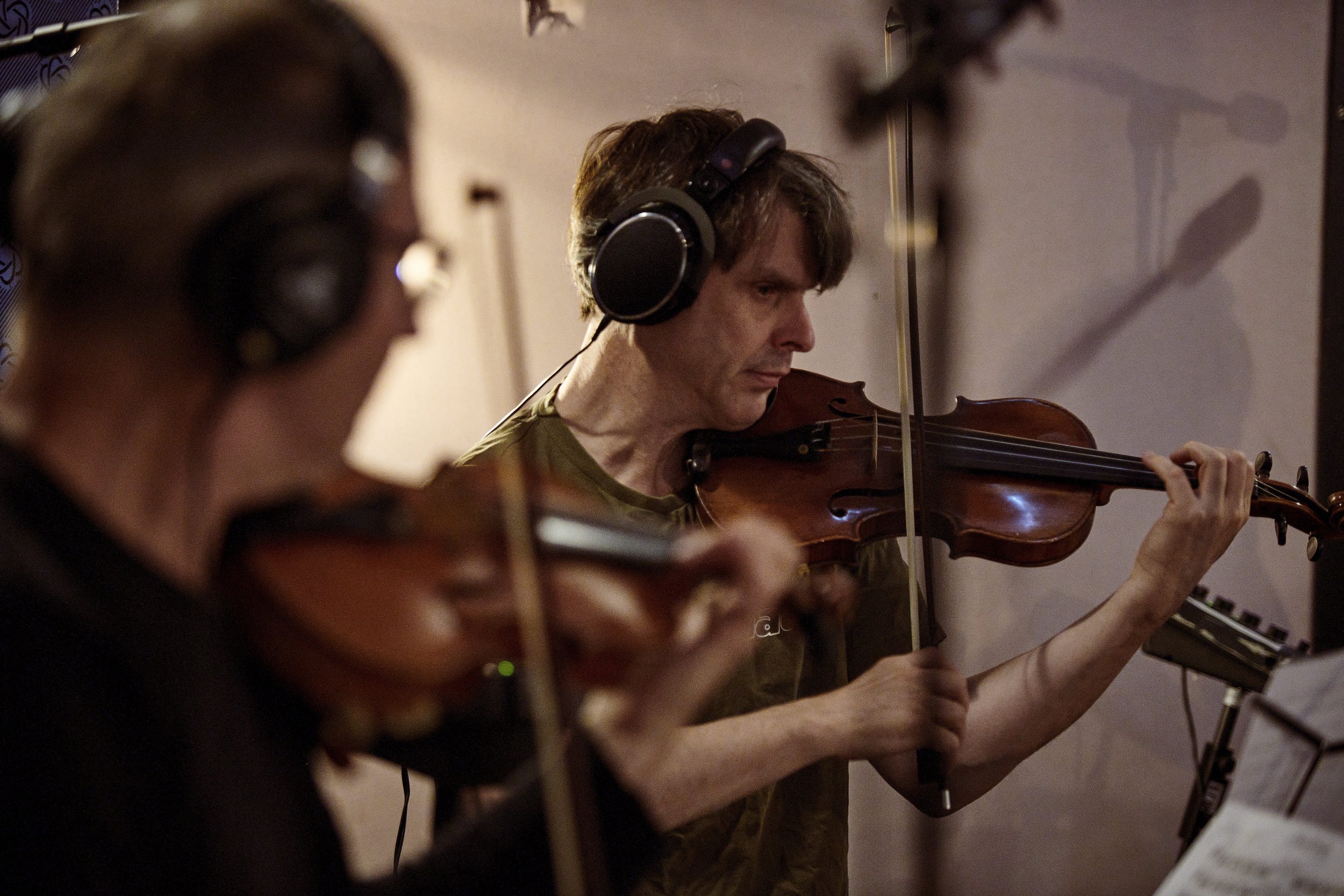Burning Gold
In search of lost human connection
Directed by Matt McDermott
Interview by Tatev Avetisyan
In the wheat fields, where the sun slowly sets, London-based director Matt McDermott sets an enigmatic dance performance visually capturing the art of human connection with nature and self. A transitional choreography, performed by dancers in stunning geometric costumes under a string quartet, takes us into the gradual mood shift from withholding energy to mental and physical liberation. Here nature and geometry fall into the conversation of interconnectedness and spiritual tension, metaphorically interpreting the global events of recent years.
In our interview with Matt McDermott, we unveil the concept behind Burning Gold, the intriguing costume designer work and the people who shaped McDermott's aesthetic throughout his filmmaking career.
Let’s start with the beautifully evocative title. What does Burning Gold mean within the context of the film?
The original film idea began in lockdown, and we had the working title Surfacing. We shot some initial photographs to test the costumes we made ourselves. Designer and Art Director Louise Wilkinson and I were interested and inspired by the idea of human connection, particularly when social distancing enforced barriers to the ways we connected. We had the mindset to let the meaning evolve during the making of the film. As our brilliant collaborators came on board, the concept expanded beyond the original meaning, to a wider universal meaning which is our human relationships with each other and nature itself. During lockdown, for many, nature was a valuable place for healing, for those who were lucky enough to access it easily.
Burning Gold was a phrase we loved when we found it while researching folk law traditions and poetic meditations on landscapes and the seasons, such as the book; Meadowland: The Private Life of an English Field. With the words Burning Gold, we loved the evocative connotation of something precious being eroded or destroyed. It has a double meaning for us, the first being the conservation of the natural world and our appreciation of the simple things; the abundance land provides us. The other is the beauty of authentic human connection - I see the film as a celebration of letting down barriers to connect with others and the natural world around us. The visual beauty of nature and farming land is celebrated in the film, and we hope it acts as a reminder that our precious natural places should be appreciated and taken care of.
You mention Russia’s attack on Ukraine as one of the reasons behind the film, along with the pandemic and climate change. These are critical themes that heavily weigh on our current society. In Burning Gold, you’ve collaborated with choreographic and dancing duo Alice + Synne to explore them. What do you think made dance the appropriate tool to do this? And how did your collaboration with Alice + Synne begin and develop throughout the film?
Our goal was to make a passion project film as an artistic response to the pandemic and other unprecedented global events of recent years. The film is not solely about any one of those recent crises. I aimed to create a feeling of the current climate through the mood of the visuals. These subjects seemed too big to be explored with words alone, so dance seemed the perfect medium to explore heightened emotions poetically and gracefully. Louise and I discovered Alice + Synne’s work from their recent dance performance on London Southbank Bankside Beach; Bodies of Water. It was such a meaningful and visually beautiful project with incredible costumes designed by Jessica Evans - flowing elegant silk costumes against the background of the urban setting of London’s Southbank Bankside beach and the flowing river Thames just stopped us in our tracks - we were blown away and instantly wanted to work with them.
Alice + Synne really engaged with the project and helped us develop the ideas. They brought on board the cast and the same costume designer Jessica Evans they had worked with on Bodies of Water. I wanted the creative to evolve as we made the film. From the first calls and dress rehearsal, we knew we had a wonderful team. Following a discussion of the themes, we explored different styles of storytelling and emotions through movement using the beautiful score Tide Within by Veera Lummi as our starting point. With Alice in her role as Choreographer and Assistant Producer, experimentation continued as we shot the film. Our shared vision created a very collaborative process. The dancers brought so much of themselves to the process and responded emotionally to the natural environment and each other. It kept a spontaneous and improvisational dance style.
“Dance seemed the perfect medium to explore heightened emotions poetically and gracefully”
Costume design gives the film a striking feature, effortlessly complementing the dance performance. What was your vision behind each look and how did you communicate it to the costume designer Jessica Evans? What was your main source of inspiration?
Louise and I loved an art project from the 1950s called the The Mask Series: a collaboration between a photographer, a cartoonist, the paper masks and costumes designed and made by Charles and Ray Eames. Another big inspiration was the Bauhaus Ballet: A Dance of Geometry and Sonia Delaunay. In particular, her beautiful ballet costumes and Charles Fréger and his book Wilder Mann. The costumes act as metaphorical distillations of persona, abstracting the human form into colourful geometric shapes - as if the characters have their homemade protective suits of armour. It felt apt coming out of the pandemic, as everyone had to find different coping ways during that time. I think the film questions - do we still have some of this armour to shed?
Jessica Evans was incredibly creative and enthusiastic to work with. Her blend of fashion skills and cutting-edge scientific research in sustainability is inspiring and fascinating. In her studies in MA Biodesign, she explores where nature, mycelium, algae and bacteria can act as Collaborators. Creating close connections to our planet through material, product, textile and costume design is the key to her work. We couldn’t have asked for a better costume designer to work with as she is so engaged with subject matters and themes we find fascinating. Alice + Synne and Jessica shared our interests in striking design work, highlighting the amazing power and beauty of the natural world; we were very aligned.
The words of the poem How Do We Feel by poet, artist, songwriter and climate activist Love Ssega accompany us through the film, along with sound of Tide Within - music composed by Veera Lummi and performed by the Modulus Quartet. Both poem and music were created specifically for Burning Gold. How challenging was it to make sure that these two elements fit together? What was the collaboration like? And was there a lot of back and forth or did you give them complete freedom?
The music Tide Within was composed by Veera Lummi and performed by the Modulus Quartet. Again we felt blessed to have found such talented collaborators. I reached out to Lynden Campbell at Hot House Music and she instantly felt Veera’s music would be a great match after I shared the idea with her. Veera was amazing to work with; she had already written Tide Within, which was yet to be recorded. Tide Within was such a good fit. It was almost uncanny how closely linked it was to the film’s concept. Veera had been exploring similar subjects to us, with her exploration into the internal rises and falls we can all feel strongly about, especially in light of recent world events. Here is a quote from Veera: “I wanted to reflect the inner tide we all have moving from not ‘being in sync’ to finding balance and flow”.
We felt during the editing process that the film needed something else to compliment the music to lift it poetically to engage the audience directly and inspire more room for thought. Love Ssega is an incredible poet, artist, songwriter and climate activist. I became aware of his work through his recent project Home-Zero at the National Gallery, which he directed and composed. Love Ssega is currently Philharmonia’s Artist in Residence for 2022/23. As the edit evolved, we felt it became clear that ideas around climate were coming to the fore. I invited Ssega to respond instinctively to the visuals, and he wrote the poem - How do we feel? - the perfect final piece to the jigsaw the film needed. Love Ssega’s poem elevated the film in a profound and thought-provoking way.
The film is composed of several powerful elements, including as we have just mentioned music, dance, poetry and costume design. How did you bring all these elements together, and are there any learning you can share with us from a directorial point of view?
It was an interesting process to balance these elements to create the right impact and mood. The costumes have a lovely homemade aesthetic, which meant they were quite fragile to work with. We had a few challenges during the filming in keeping the costumes on the dancers as they moved. I think the other important piece to the puzzle is the edit. We had the choice in the editing to make the dance sequences longer and let them breathe more. We made the call to keep the editing sparse and punchy, which links to the music’s pace. It helps to keep the viewer’s attention focused on the action, music and overall message.
How did you first get started directing videos? What directors do you draw inspiration from, if any?
I began my career as a broadcast motion designer at Sky and then moved into directing and creative art direction. I believe the strength of the initial idea is the key to the success of a project, and I always strive to execute ideas in the most skilful and compelling way. My instinct in working is to collaborate, which is why I was drawn to directing. There are many directors and artists I admire and my sources of inspiration are always changing and evolving. In terms of legends, I love Hitchcock, Kubrick and Francis Ford Coppola. I saw Koyaanisqatsi as a student and was fascinated by it.
Jonathan Glazer had the biggest impact on me back in my university days. His music video for Radiohead Street Spirit inspired me to change my course from Graphic Design to Moving Image. Under the Skin just blew me away in terms of creating a very artistic and unnerving atmosphere which also reminded me quite a bit of Kubrick. Wes Anderson is a big influence on me as every frame of his work is so beautifully art directed in animation and film. He adds a distinctive sense of humour and wit to his work which is unique to him. Fantastic Mr Fox is a favourite in our house. I love the directing collective Megaforce. Their inventive ideas are extraordinary yet have a down-to-earth quality which is always on point and relevant to contemporary youth culture.
You have over 20 years of experience, with a valuable portfolio of short films for prominent broadcasters and socially conscious films. Across film festivals internationally, we see the biggest winners are those with a powerful social message behind them. Would you say that as a filmmaker you feel a certain duty to direct work aimed at providing visibility over issues and challenges we are currently facing? And is that something directors should consider when creating work?
I have always admired innovative and risk-taking work. Directors who are not afraid to make trouble and challenge the audience. The work I have been most proud of in my career has had powerful content to work with in the first place. I recently worked on two #TogetherAgainstHate campaigns for Channel 4, which involved working with shocking content around public-facing staff receiving abuse which sadly worsened during the pandemic. The ad break takeovers delivered important and timely messages about the need for social change. I think it is very admirable of Channel 4 to give up entire ad breaks to shine a light on these important issues of online abuse and public-facing staff abuse. I believe advertising space should be used more for socially conscious work to highlight problems we face and spark helpful conversations around important issues. A dimension of my work which is significant to me is a focus on work that addresses social change, and I would love to expand in this area.
I recently directed two TVCs for a campaign called #EndingTheHarm which aired in Northern Ireland. These hard-hitting ads highlight the harm caused by illegal money lending - one follows the victim’s timeline, and the other the paramilitaries’. It was great to work with Ardmore, and I was grateful to them for trusting us to deliver such an important message. Despite the harrowing subject matter, it was such a great experience working with the actors and the whole production team. My previous short film Gravity’s Law has a universal spiritual message about our connection to (or lack of) nature and life, which I believe is helpful for everyone, especially with how the world is now.
I made a short film called Stone Cold Catwalk for The Ministry of Stories Monster Monologues project, where they invited disadvantaged students in Hackney (aged 13-18) to write comic monologues for monsters, telling their side of the story. I believe directors should always think deeply about the message before taking on a job and to make sure the content is in line with their ethical beliefs. I am proud of all of the commercial work I have made as a filmmaker. We all know the hard work and creative effort from the whole team that goes into getting an idea to screen. I love to work with quality content which I am passionate about and create ideas and executions that are compelling and impossible to ignore. I want to make work that becomes part of popular culture. Ultimately I want to use the power of creative ideas and surprising executions to encourage debate and inspire positive societal change.
“Ultimately I want to use the power of creative ideas and surprising executions to encourage debate and inspire positive societal change”
What are you working on next?
I am excited to have recently shot a film for a commercial client shot on a Virtual Production stage using the game engine Unreal to create the CGI backgrounds. We created a photorealistic 3D environment of a park on a sunny day which was on a giant LED screen in a film studio. We created a seamless blend between the real and virtual sets on the LED screen and matched the lighting in the studio to the background virtual environment. It means you can shoot a sunset anywhere in the world all day long and capture it all on camera (no green screen). I was inspired to try out this technique after seeing The Mandalorian making of, which used pioneering virtual production, using a game engine and real-time render video walls to create the backdrops of the amazing worlds of Star Wars. It is undoubtedly an exciting development for filmmakers and opens up many new exciting opportunities. However, I also love the magic of shooting in a real location. The happy accidents and spontaneous moments often make the shot more special. I would love to use Virtual Production abstractly and perhaps jump from real to imagined/heightened worlds. I am excited to see what is next.
DIRECTOR / PRODUCER: Matt McDermott
ASSISTANT PRODUCER: Alice Ortona Coles
CHOREOGRAPHY: Alice + Synne
DANCERS: Yuma Sylla / Théïa Maldoom / Anouk Jouanne
D.O.P: Nicholas Bennett
RUNNER / CAMERA ASSISTANT: Lara Bennett
DRONE PILOT: Will Glover @ Fleye
RUNNER / PHOTOGRAPHER: Joe Gollifer
DESIGNER / ART DIRECTOR: Louise Wilkinson
STYLIST / COSTUME DESIGNER: Jessica Evans
COMPOSER AGENT: Lynden Campbell
COMPOSER: Veera Lummi
‘TIDE WITHIN' performed by Modulus Quartet
POEM: ‘How Do We Feel’ written and performed by Love Ssega
EDITOR: Claire McGonigal @ Final Cut
COLOURIST: Marty McMullan @ Freefolk
SOUND DESIGN & MIX: Will Morton @ Bubble
With thanks to Final Cut, Freefolk, Hatch, Fleye, Loop Talent, Bubble and The Gate Films.

